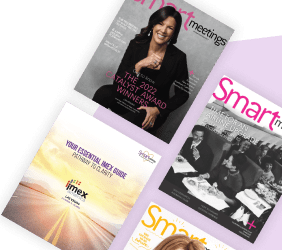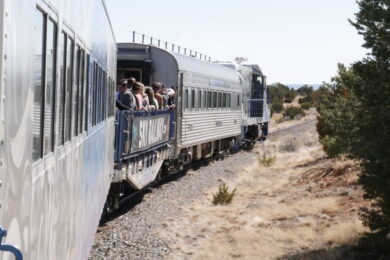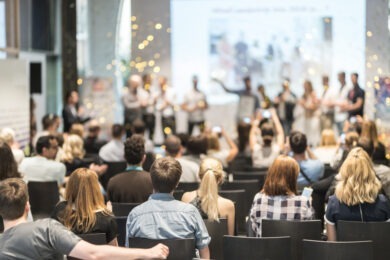Plus: Other GMID celebrations from around the U.S.
This year’s Global Meetings Industry Day (GMID) was one to remember. Meeting Professionals International (MPI) and the Society for Incentive Travel Excellence (SITE) teamed up for a lively, eight-hour livestream packed with fresh insights, emerging trends and meaningful discussions around the future of meetings and events. Couldn’t tune in? Don’t worry—we’ve got the highlights for you.
1. Don’t Let Uncertainty Lead the Way
Rob Adams, president of Bishop-McCann, offered wise words during an interview on how to navigate the unpredictable global landscape. “We can only control so much. Make decisions based on what you know, not what you don’t know,” he said. His advice? Stay rooted in facts and avoid stalling or making decisions based on fear or speculation. In a time when headlines can shift by the hour, meeting professionals can stay empowered by focusing on what’s within reach and within reason.
2. Wellness Took Center Stage
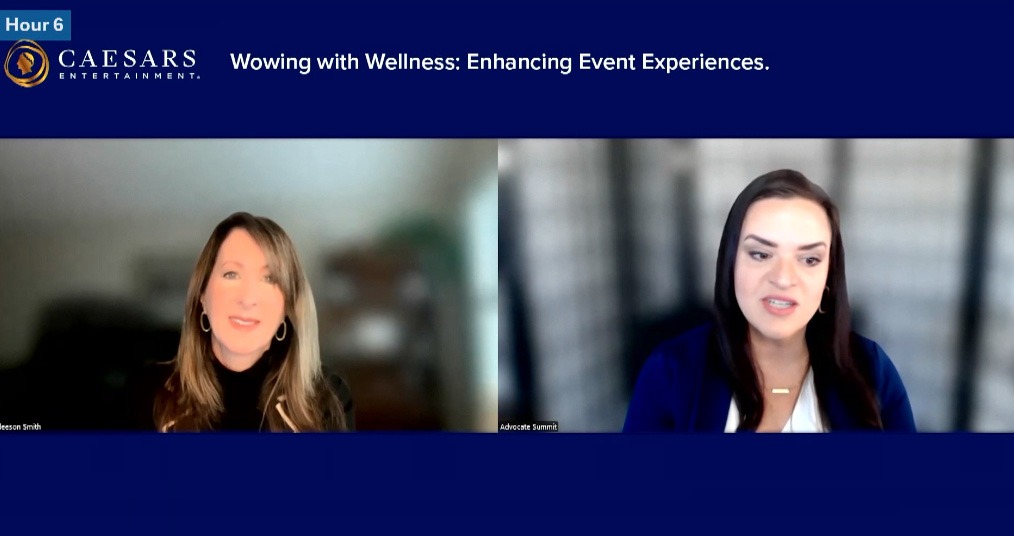
Wellness wasn’t just a buzzword—it was an experience. The eight-hour livestream wove moments of calm, clarity and self-care throughout the day. Visit Galveston led viewers in a gentle yoga flow surrounded by the peaceful underwater ambiance of the Moody Gardens Aquarium. Dorsey Standish, CEO of Mastermind Meditate, shared tips for developing healthier sleep habits—something every road warrior and planner can benefit from. Caesars Entertainment supported a breathwork session with Sepideh Eivazi, giving attendees tools to reset and recharge. These experiences weren’t just refreshing—they were reminders that a healthy mindset leads to better meetings.
3. 2025 Trends to Watch
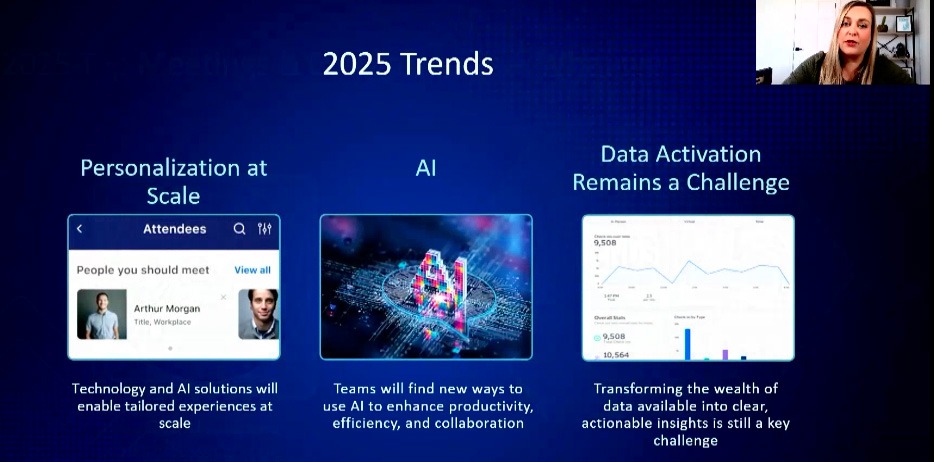
Rachel Andrews, global head of meetings and events at Cvent, delivered a fast-paced and future-focused forecast. Here’s what’s coming into view for next year and beyond:
- Personalization at Scale: Thanks to smarter event tech and AI, planners can deliver tailored experiences to large audiences without sacrificing the personal touch.
- AI Boosts Productivity: Expect more creative uses of AI to handle everything from scheduling and content creation to attendee engagement and follow-ups, freeing teams up for more strategic work.
- Data Activation Remains Tough: We’re swimming in data, but turning it into meaningful insights remains one of the industry’s biggest challenges. Getting this right can be a game-changer.
- Return on Relationships (ROR): Beyond ROI, relationships matter more than ever. Measuring the impact of connection and community is becoming a priority metric for event success.
- Field Marketing Events Are on the Rise: Smaller, localized events are gaining popularity for their agility and relevance. This trend is driving the need for more self-service tools and streamlined planning options.
- Year-Round Content Strategy: What happens at your event shouldn’t stay there. Smart planners are repurposing event content for ongoing campaigns, keeping audiences engaged long after the last session ends.
- Unique Venues and Destinations: Flexibility, affordability and creating unforgettable attendee experiences are driving demand for off-the-beaten-path spaces and lesser-known destinations.
- Tech for Accessibility: With new regulations like the European Accessibility Act coming in June 2025, tech is helping ensure events are more inclusive and accessible for all attendees.
- Renewed Focus on Data Privacy: As privacy laws evolve, venues and planners are doubling down on compliance. Transparency and trust with attendee data are becoming essential.
4. Cultural Intelligence is a Superpower
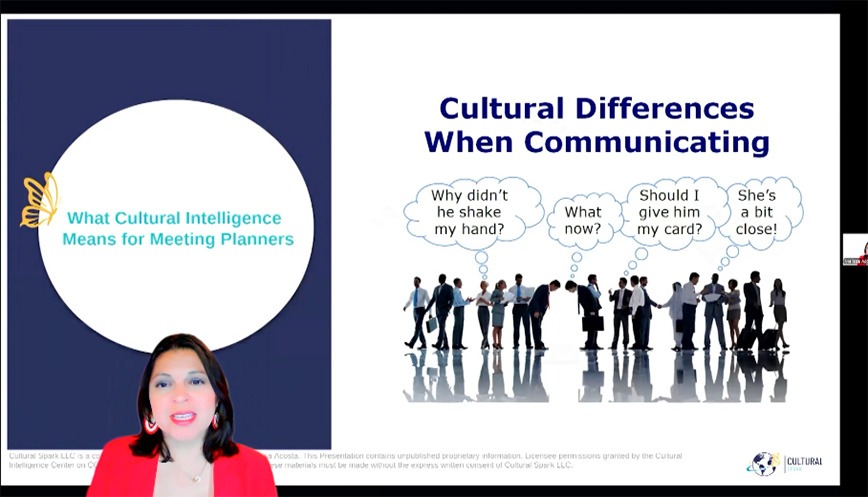
Melissa Acosta, CEO of Cultural Spark, delivered a standout session on the power of cultural intelligence (CQ) in planning more impactful and inclusive meetings. She emphasized that the biggest missed business opportunities often stem from simple cultural misunderstandings. Building cultural fluency isn’t just nice—it’s necessary. Her tips?
- Research before you plan: Understanding your audience’s culture, values and preferences is the first step in creating an event that truly resonates.
- Adapt your approach: Use that research to shape everything from your agenda and speakers to food choices and communication styles.
- Commit to continuous learning: Cultural awareness is not a checklist—it’s a lifelong learning journey that evolves with every meeting and every audience.
5. Incentive Travel is Evolving
Annette Gregg, CEO of SITE, shared current data on incentive travel and how it’s adapting to the new world of work. Key trends included:
- Resilience Amid Disruption: Despite global uncertainty, businesses are adapting and surviving. The incentive space continues to thrive as companies look for meaningful ways to motivate teams.
- Workplace Demographics Are Shifting: A new generation of employees, many in hybrid or remote roles, is influencing how and why incentive programs are designed. Planners are being called to rethink goals and delivery models.
- Sustainability is Top of Mind: More programs are being built with environmental and social impact in mind. From carbon offsets to local sourcing, sustainability is no longer optional.
- Generative AI is Here to Stay: AI tools are reshaping how incentive travel is planned, personalized and delivered. Learning how to use them effectively is becoming a critical skill.
- New Destinations Are Trending: While inflation is prompting some to keep programs closer to home, others are getting creative with lesser-known destinations that offer fresh experiences at lower cost.
- Company Culture Drives Program Design: More incentives are being crafted to strengthen internal culture, build community and reinforce brand values—not just reward performance.
- Incentives Remain a Key Motivator: Recognition still matters. Companies see incentive travel as a powerful way to inspire, engage and retain top talent.
Bonus: Cities Around the Country Joined the Celebration
While MPI and SITE were leading the charge online, destinations across the U.S. showed up in full force to mark Global Meetings Industry Day in their own meaningful ways—spotlighting the economic power of meetings, building community and rolling out innovations.
New York City Lit Up Blue and Introduced a New AI Tool
New York City reminded us why it’s called the business capital of the world. NYC Tourism + Conventions pulled out all the stops by hosting its largest-ever Tristate Meeting Planner event at The Glasshouse. Over 300 business event professionals and 120 local businesses gathered with help from partners like The Manhattan Center and Ink48 Hotel—and were even treated to a live performance from Hamilton through Broadway Plus.
In a bold show of support for the industry, the New York City skyline lit up blue for the night. Iconic landmarks including One World Trade Center, Rockefeller Center and the Javits Center joined the celebration. But NYC didn’t just look back—it looked ahead. The city unveiled Ellis, the first-ever AI-powered chat platform built specifically for business event professionals by a convention and visitors bureau. With 45 languages supported, Ellis aims to simplify planning across all five boroughs.
With 13 million business visitors projected in 2025 and a full recovery of business travel expected by 2026, New York City is charging forward while commemorating 400 years of NYC history in 2025 and America 250 in 2026.
Denver Showcased the Power of Meetings in Dollars and Impact
In Denver, GMID served as both a celebration and a rally cry. Visit Denver highlighted that the meetings industry brought over $845 million to the local economy in 2024 alone, with $66 million tied directly to the recent expansion of the Colorado Convention Center. This development opened the door to large-scale events that previously wouldn’t have been feasible—and there’s more on the way. With 19 future meetings already booked, the expansion is expected to generate another $310 million in economic impact and fill more than 200,000 hotel room nights.
Richard Scharf, CEO and president of Visit Denver, said, “The meetings industry does more than support gatherings—it is a powerful economic engine that drives revenue to local businesses, creates jobs and fosters innovation.”
Las Vegas Gave Back with a Day of Service
Las Vegas took a heartfelt approach to GMID by turning its celebration into a community service event. About 40 hospitality sales team members from resorts across the city came together at The Just One Project, a local food pantry, to pack grocery bags, distribute meals and lend a hand in the warehouse. This Day of Service reflected a deep connection between the city’s vibrant meetings industry and the local community it supports.
“[The Just One Project] delivers the food to a lot of different resources in town,” said Rebecca DeLuca, vice president of sales for Las Vegas Convention and Visitors Authority. “It could be senior citizens who live at home, or a facility, schools or just high-need areas.”
Outside of GMID, DeLuca also talked about The Just One Project’s food impact reports their team can produce for a meeting organizer. “They will show the direct impact to the community how much food was rescued from their meeting, they’ll also show the water conservation that was saved,” she says. “Food doesn’t pig farms are fine, but when you go to a pig farm and you send your food there, there’s a lot of water that’s used. In Las Vegas, water conservation is huge for us, so the fact that there’s water conservation efforts in alignment with Food Rescue is just incredible and inspiring.”
According to the Las Vegas Convention and Visitors Authority (LVCVA), business travelers brought nearly 6 million visits to Las Vegas in 2024. The convention sector generates over $15 billion in annual economic impact for the region and supports more than 67,000 jobs. In a city built for events, GMID was a reminder of the powerful ripple effect meetings have—not just on business, but on people.

